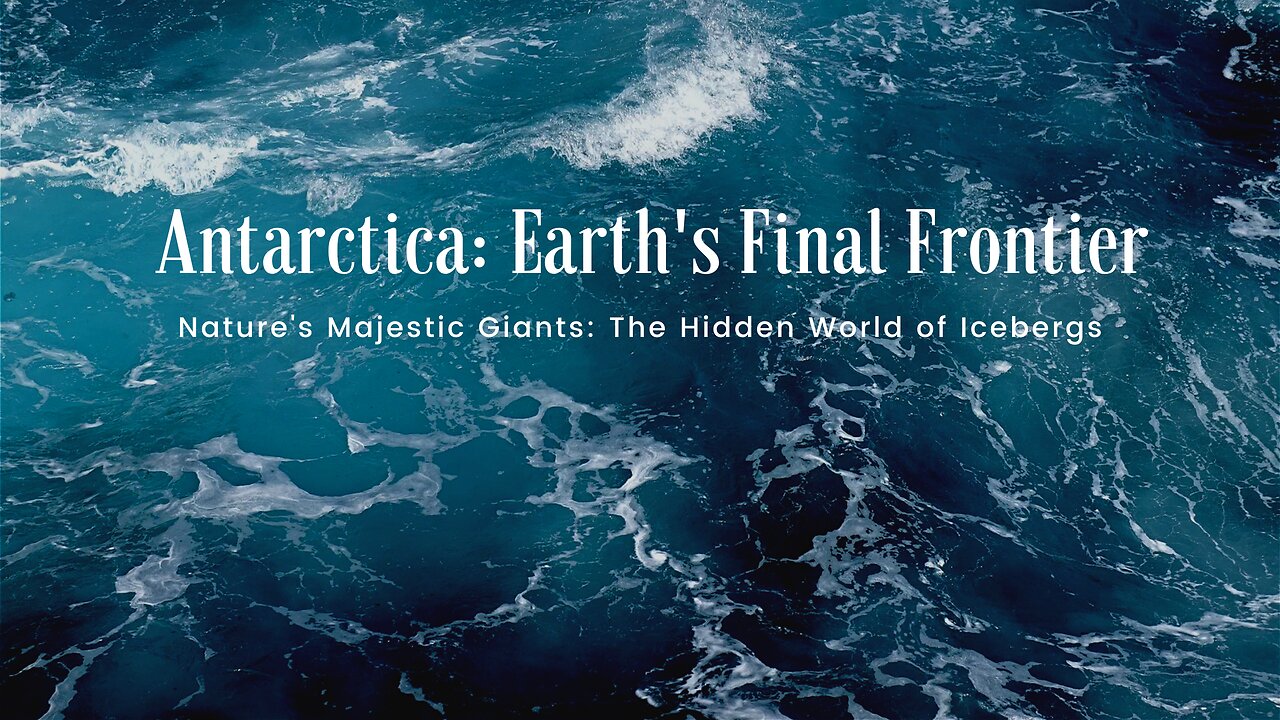Premium Only Content

Antarctica: Nature’s Frozen Wonderland || Never Seen Before
Antarctica is the southernmost continent on Earth, renowned for its extreme climate and breathtaking landscapes. Covering about 14 million square kilometers, it is the fifth-largest continent and is mostly covered by a vast ice sheet, which holds around 60% of the world’s fresh water.
### Geography and Climate
The continent is characterized by its stark beauty, featuring towering icebergs, expansive glaciers, and unique formations like the Dry Valleys, which are some of the driest places on Earth. Temperatures can plummet to below -80 degrees Celsius (-112 degrees Fahrenheit) in the interior during winter, making it one of the harshest environments on the planet.
### Wildlife
Despite its harsh conditions, Antarctica is home to a variety of wildlife, including penguins, seals, and seabirds. The most famous residents are the Emperor and Adélie penguins, which thrive in the cold and often gather in large colonies. The surrounding waters are rich in nutrients, supporting a diverse marine ecosystem, including krill, which play a critical role in the food chain.
### Research and Conservation
Antarctica is primarily a site for scientific research, with many countries operating research stations throughout the year. The Antarctic Treaty, established in 1961, protects the continent for peaceful and scientific pursuits, banning military activity and mineral mining. It aims to conserve the unique environment while promoting international cooperation.
### Challenges
The continent faces significant challenges from climate change, with rising temperatures leading to ice melting and altering ecosystems. This not only threatens the local wildlife but also has global implications, as melting ice contributes to rising sea levels.
In summary, Antarctica is a region of remarkable scientific interest and ecological importance, representing a fragile environment that requires ongoing protection and study.
-
 28:39
28:39
The Why Files
3 days agoCryptids Vol. 4 | Bunyips, Yowie and Australian Nightmare Fuel
18.2K35 -
 1:07:06
1:07:06
Mike Rowe
18 days agoThe Fight For America's Heartland | Salena Zito #442 | The Way I Heard It
14.6K44 -
 LIVE
LIVE
TimcastIRL
2 hours agoSouth Park Goes FULL CHARLIE KIRK, Latest Episode ROASTS Trump Again | Timcast IRL
8,459 watching -
 LIVE
LIVE
SpartakusLIVE
3 hours agoThe Return of the KING of Content
533 watching -
 10:05
10:05
MattMorseTV
6 hours ago $2.11 earnedHe actually did it...
14K12 -
 LIVE
LIVE
Anthony Rogers
1 day agoEpisode 376 - Todd Schowalter
74 watching -
 LIVE
LIVE
megimu32
2 hours agoOTS: Movie Tie-In Games + Remakes: Let’s Play Memory Lane
96 watching -
 LIVE
LIVE
Adam Does Movies
9 hours agoTalking Movies + Ask Me Anything - LIVE
68 watching -
 1:17:18
1:17:18
Glenn Greenwald
1 day agoWhat are CBS News' Billionaire Heirs Doing with Bari Weiss? With Ryan Grim on the Funding Behind It; Europe Capitulates to Trump Again | SYSTEM UPDATE #494
94.4K63 -
 1:43:49
1:43:49
RiftTV
4 hours agoCNN Calls Black NY Shooter WHITE, Cincinnati FATIGUE | The Rift | Guest: Braeden Sorbo, 2Protects1
37K13